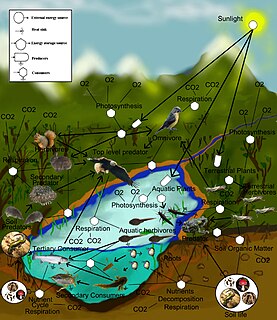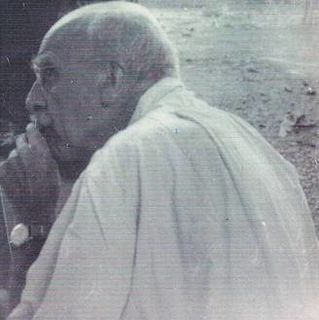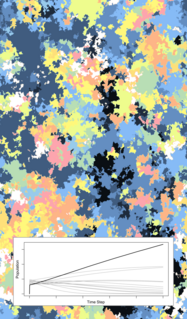Mathematical and theoretical biology is a branch of biology which employs theoretical analysis, mathematical models and abstractions of the living organisms to investigate the principles that govern the structure, development and behavior of the systems, as opposed to experimental biology which deals with the conduction of experiments to prove and validate the scientific theories. The field is sometimes called mathematical biology or biomathematics to stress the mathematical side, or theoretical biology to stress the biological side. Theoretical biology focuses more on the development of theoretical principles for biology while mathematical biology focuses on the use of mathematical tools to study biological systems, even though the two terms are sometimes interchanged.
 W
WThe Mathematical Biosciences Institute (MBI) is an institution of higher learning affiliated with the Ohio State University in Columbus, Ohio. MBI received major funding from the National Science Foundation.
 W
WActa Biotheoretica: Mathematical and philosophical foundations of biological and biomedical science is a quarterly peer-reviewed scientific journal published by Springer Science+Business Media. It is the official journal of the Jan van der Hoeven Society for Theoretical Biology. The editor-in-chief is D.J. Kornet.
 W
WThe Bak–Sneppen model is a simple model of co-evolution between interacting species. It was developed to show how self-organized criticality may explain key features of the fossil record, such as the distribution of sizes of extinction events and the phenomenon of punctuated equilibrium. It is named after Per Bak and Kim Sneppen.
 W
WComplex systems biology (CSB) is a branch or subfield of mathematical and theoretical biology invented by Robert Rosen concerned with complexity of both structure and function in biological organisms, as well as the emergence and evolution of organisms and species, with emphasis being placed on the interconnectivity of, and within, biological network inference, and on modelling the fundamental relations inherent to life.
 W
WCytoscape is an open source bioinformatics software platform for visualizing molecular interaction networks and integrating with gene expression profiles and other state data. Additional features are available as plugins. Plugins are available for network and molecular profiling analyses, new layouts, additional file format support and connection with databases and searching in large networks. Plugins may be developed using the Cytoscape open Java software architecture by anyone and plugin community development is encouraged. Cytoscape also has a JavaScript-centric sister project named Cytoscape.js that can be used to analyse and visualise graphs in JavaScript environments, like a browser.
 W
WTheoretical ecology is the scientific discipline devoted to the study of ecological systems using theoretical methods such as simple conceptual models, mathematical models, computational simulations, and advanced data analysis. Effective models improve understanding of the natural world by revealing how the dynamics of species populations are often based on fundamental biological conditions and processes. Further, the field aims to unify a diverse range of empirical observations by assuming that common, mechanistic processes generate observable phenomena across species and ecological environments. Based on biologically realistic assumptions, theoretical ecologists are able to uncover novel, non-intuitive insights about natural processes. Theoretical results are often verified by empirical and observational studies, revealing the power of theoretical methods in both predicting and understanding the noisy, diverse biological world.
 W
WAn ecosystem model is an abstract, usually mathematical, representation of an ecological system, which is studied to better understand the real system.
 W
WNeil Morris Ferguson is a British epidemiologist and professor of mathematical biology, who specialises in the patterns of spread of infectious disease in humans and animals. He is the director of the Jameel Institute for Disease and Emergency Analytics (J-IDEA), director of the MRC Centre for Global Infectious Disease Analysis, and head of the Department of Infectious Disease Epidemiology in the School of Public Health and Vice-Dean for Academic Development in the Faculty of Medicine, all at Imperial College London.
 W
WHaldane's dilemma, also known as "the waiting time problem", is a limit on the speed of beneficial evolution, calculated by J. B. S. Haldane in 1957. Before the invention of DNA sequencing technologies, it was not known how much polymorphism DNA harbored, however, alloenzymes were beginning to make it clear that substantial polymorphism existed. This was puzzling because the amount of polymorphism known to exist seemed to exceed the theoretical limits that Haldane calculated, that is the limits imposed if polymorphisms present in the population generally influenced an organism's fitness. Motoo Kimura's landmark paper on neutral theory in 1968 built on Haldane's work to suggest that most molecular evolution is neutral, resolving the dilemma. Although neutral evolution remains the consensus theory among modern biologists, and thus Kimura's resolution of Haldane's dilemma is widely regarded as correct, some biologists argue that adaptive evolution explains a large fraction of substitutions in protein coding sequence, and they propose alternative solutions to Haldane's dilemma.
 W
WRichard "Dick" Levins was an ex-tropical farmer turned ecologist, a population geneticist, biomathematician, mathematical ecologist, and philosopher of science who researched diversity in human populations. Until his death, Levins was a university professor at the Harvard T.H. Chan School of Public Health and a long-time political activist. He was best known for his work on evolution and complexity in changing environments and on metapopulations.
 W
WMicroscale models form a broad class of computational models that simulate fine-scale details, in contrast with macroscale models, which amalgamate details into select categories. Microscale and macroscale models can be used together to understand different aspects of the same problem.
 W
WOn Growth and Form is a book by the Scottish mathematical biologist D'Arcy Wentworth Thompson (1860–1948). The book is long – 793 pages in the first edition of 1917, 1116 pages in the second edition of 1942.
 W
WIn aquatic biology, the paradox of the plankton describes the situation in which a limited range of resources supports an unexpectedly wide range of plankton species, apparently flouting the competitive exclusion principle which holds that when two species compete for the same resource, one will be driven to extinction.
 W
WPathVisio is a free open-source pathway analysis and drawing software. It allows drawing, editing, and analyzing biological pathways. Visualization of ones experimental data on the pathways for finding relevant pathways that are over-represented in your data set is possible.
 W
WQuantum Aspects of Life, a book published in 2008 with a foreword by Roger Penrose, explores the open question of the role of quantum mechanics at molecular scales of relevance to biology. The book contains chapters written by various world-experts from a 2003 symposium and includes two debates from 2003 to 2004; giving rise to a mix of both sceptical and sympathetic viewpoints. The book addresses questions of quantum physics, biophysics, nanoscience, quantum chemistry, mathematical biology, complexity theory, and philosophy that are inspired by the 1944 seminal book What Is Life? by Erwin Schrödinger.
 W
WSecondary electro-spray ionization (SESI) is an ambient ionization technique for the analysis of trace concentrations of vapors, where a nano-electrospray produces charging agents that collide with the analyte molecules directly in gas-phase. In the subsequent reaction, the charge is transferred and vapors get ionized, most molecules get protonated and deprotonated. SESI works in combination with mass spectrometry or ion-mobility spectrometry.
 W
WSimThyr is a free continuous dynamic simulation program for the pituitary-thyroid feedback control system. The open-source program is based on a nonlinear model of thyroid homeostasis. In addition to simulations in the time domain the software supports various methods of sensitivity analysis. It provides a GUI, which allows for visualising time series, modifying constant structure parameters of the feedback loop, storing parameter sets as XML files and exporting results of simulations in various formats that are suitable for statistical software. SimThyr is primarily intended for educational purposes and in-silico research.
 W
WMariel Vázquez is a Mexican mathematical biologist who specializes in the topology of DNA. She is a professor at the University of California, Davis, jointly affiliated with the departments of mathematics and of microbiology and molecular genetics.
 W
WProfessor Vito Volterra was an Italian mathematician and physicist, known for his contributions to mathematical biology and integral equations, being one of the founders of functional analysis.
 W
W"What Is Life" is a song by English rock musician George Harrison from his 1970 triple album All Things Must Pass. In many countries, it was issued as the second single from the album, in February 1971, becoming a top-ten hit in the United States, Canada and elsewhere, and topping singles charts in Australia and Switzerland. In the United Kingdom, "What Is Life" appeared as the B-side to "My Sweet Lord", which was the best-selling single there of 1971. Harrison's backing musicians on the song include Eric Clapton and the entire Delaney & Bonnie and Friends band, with whom he had toured during the final months of the Beatles. Harrison co-produced the recording with Phil Spector, whose Wall of Sound production also employed a prominent string arrangement by John Barham and multiple acoustic rhythm guitars, played by Harrison's fellow Apple Records signings Badfinger.